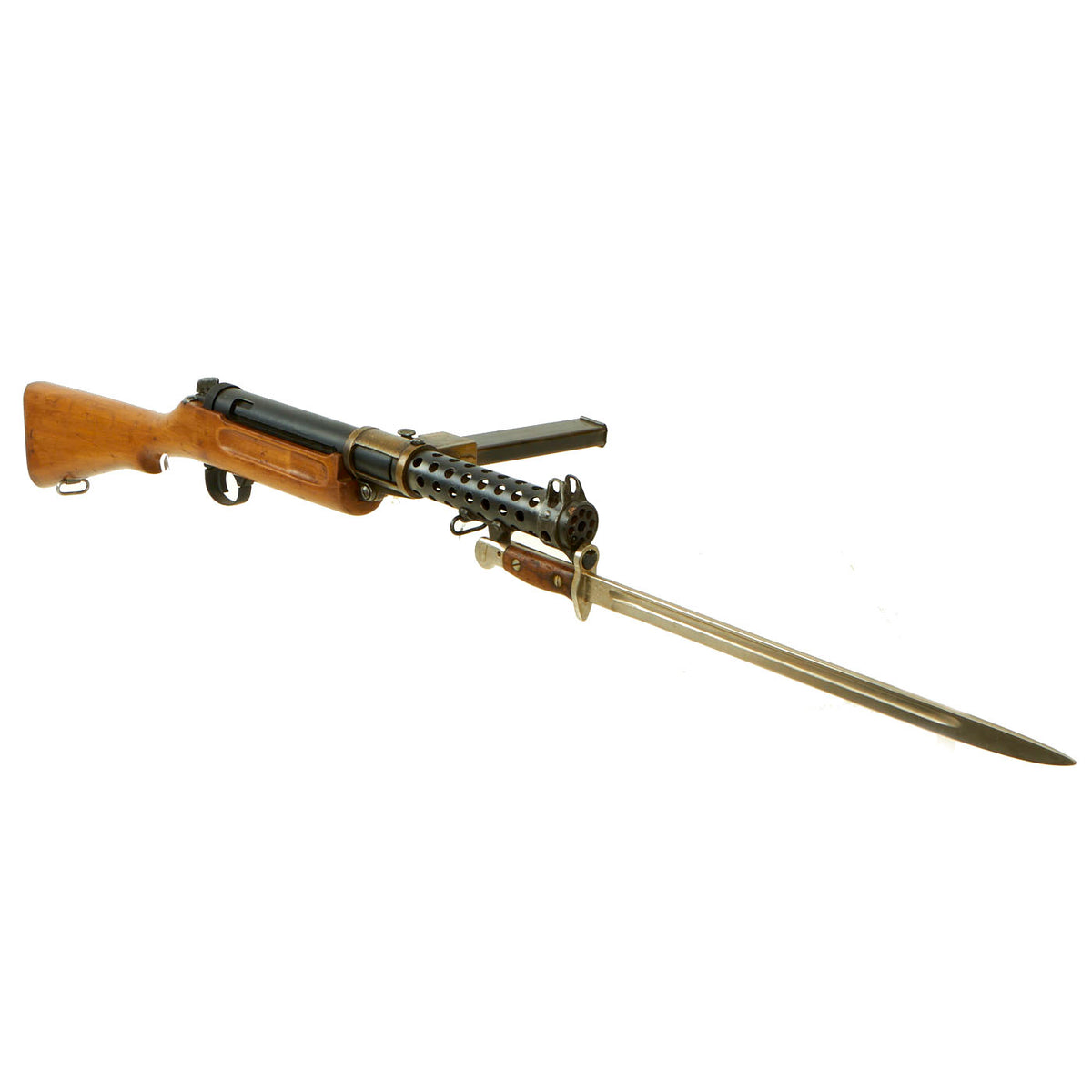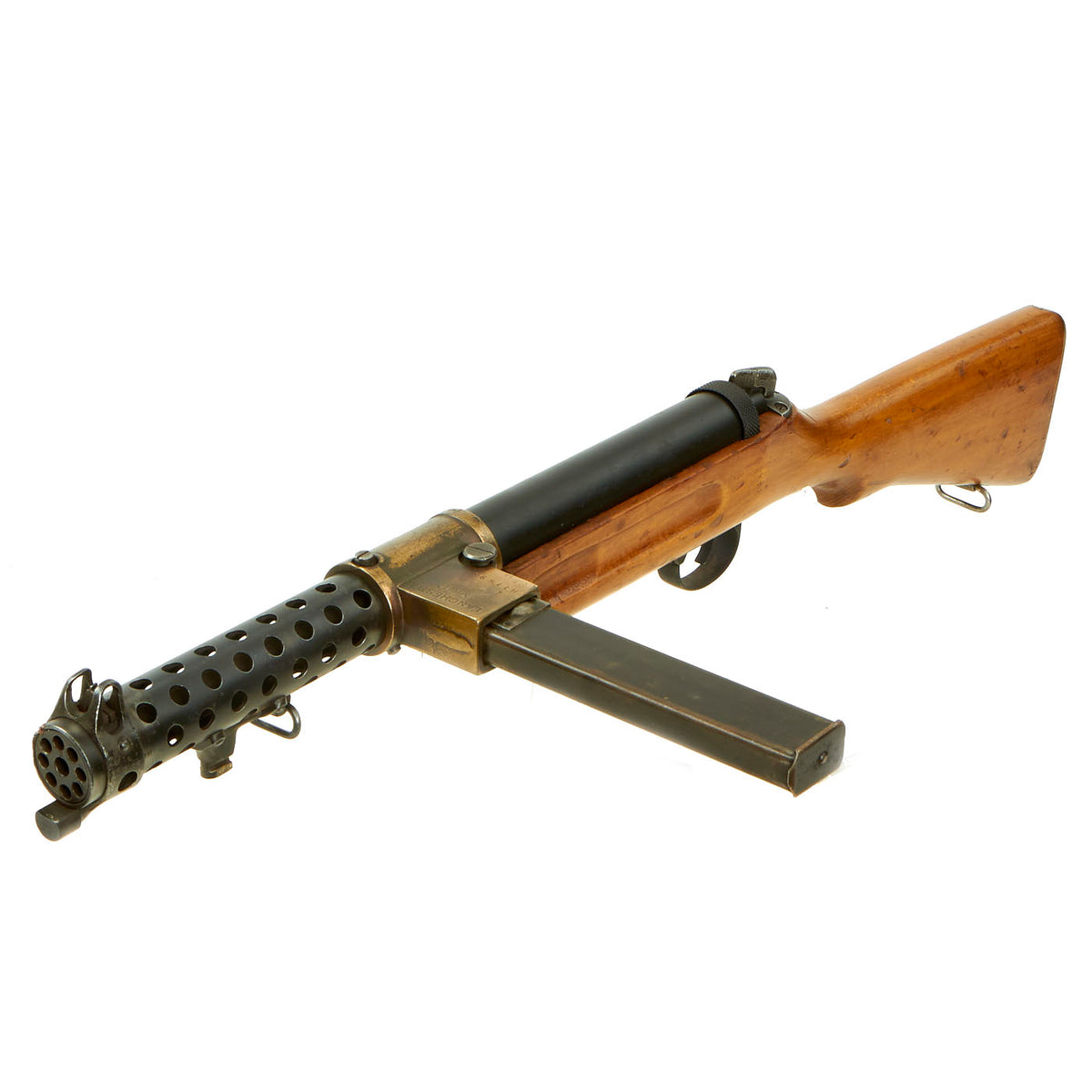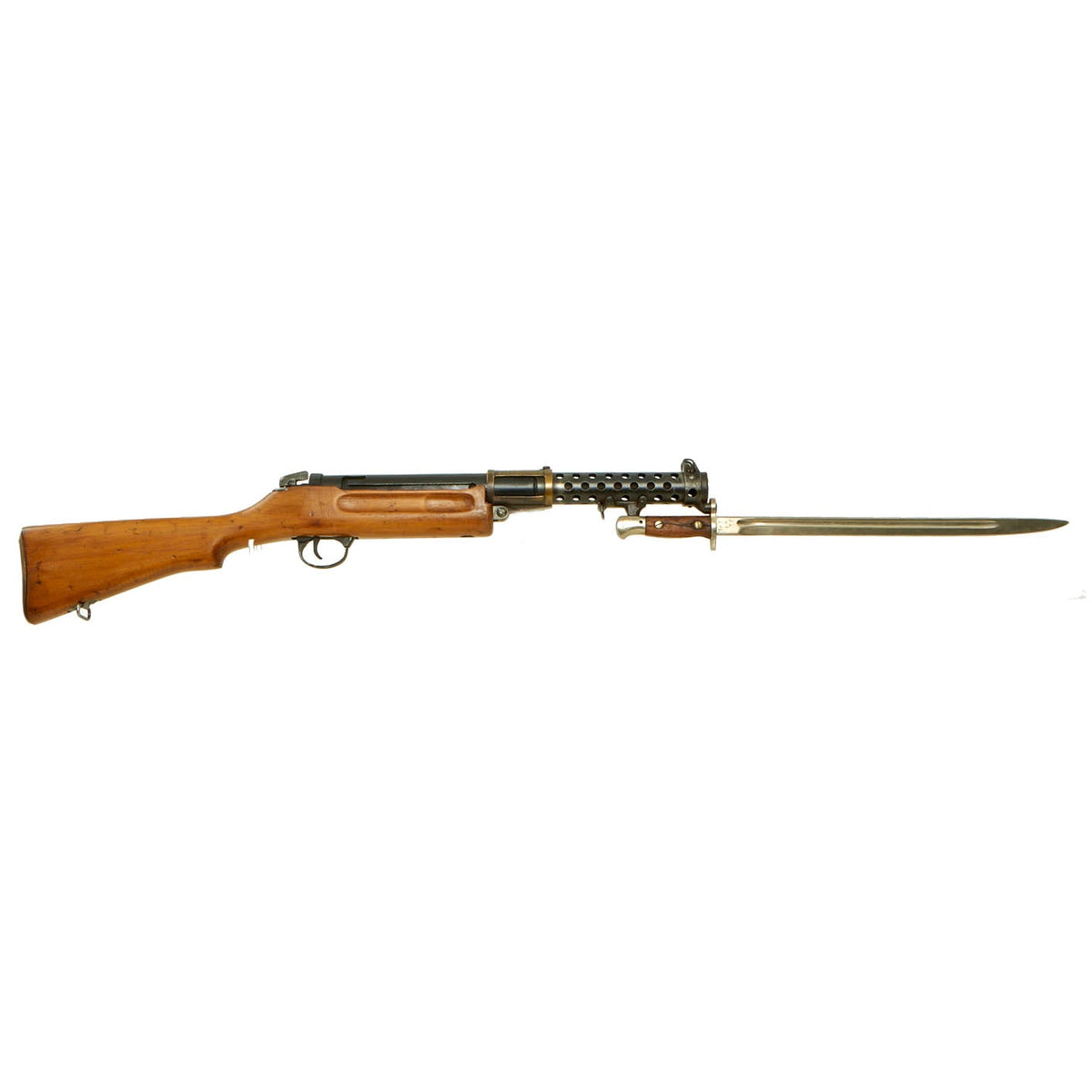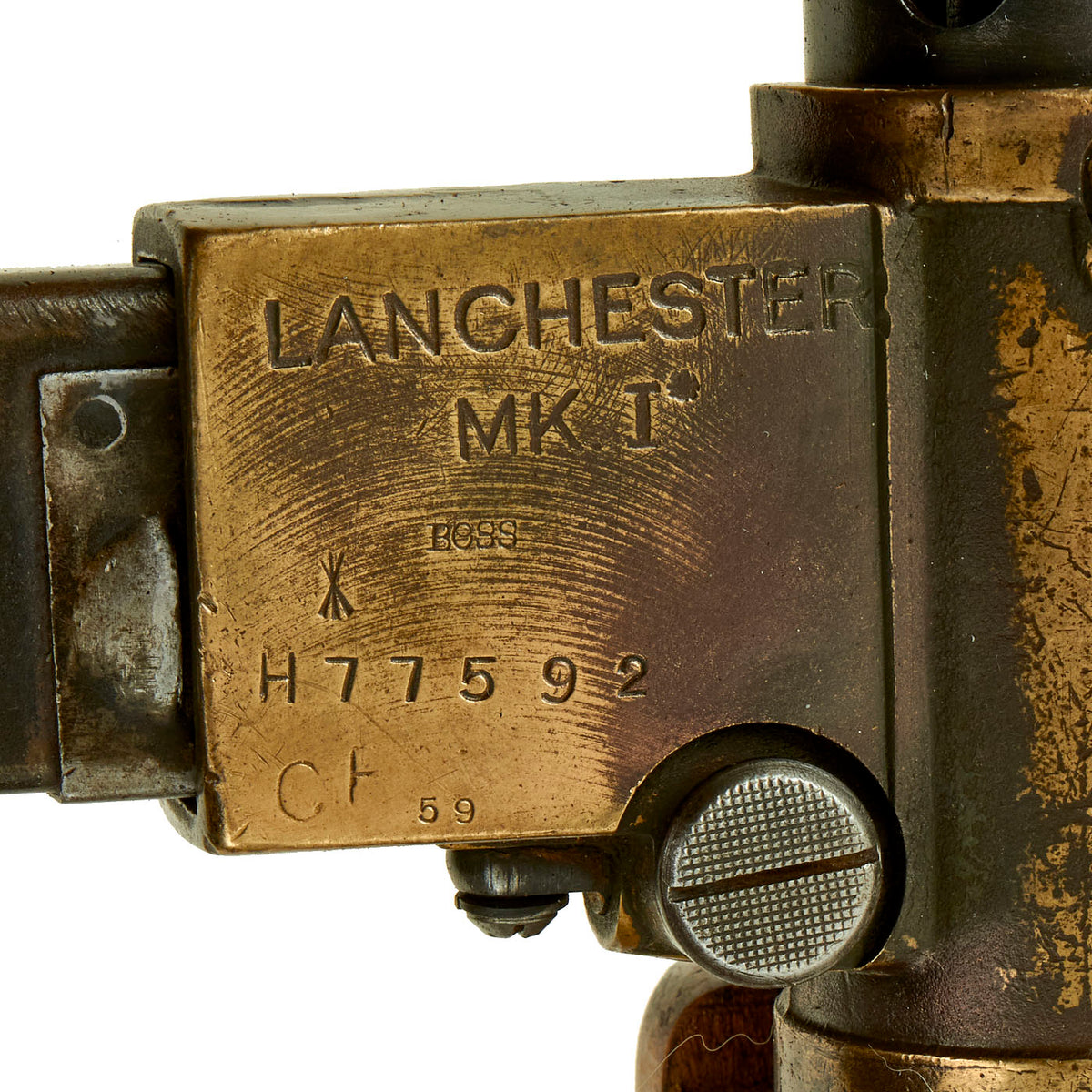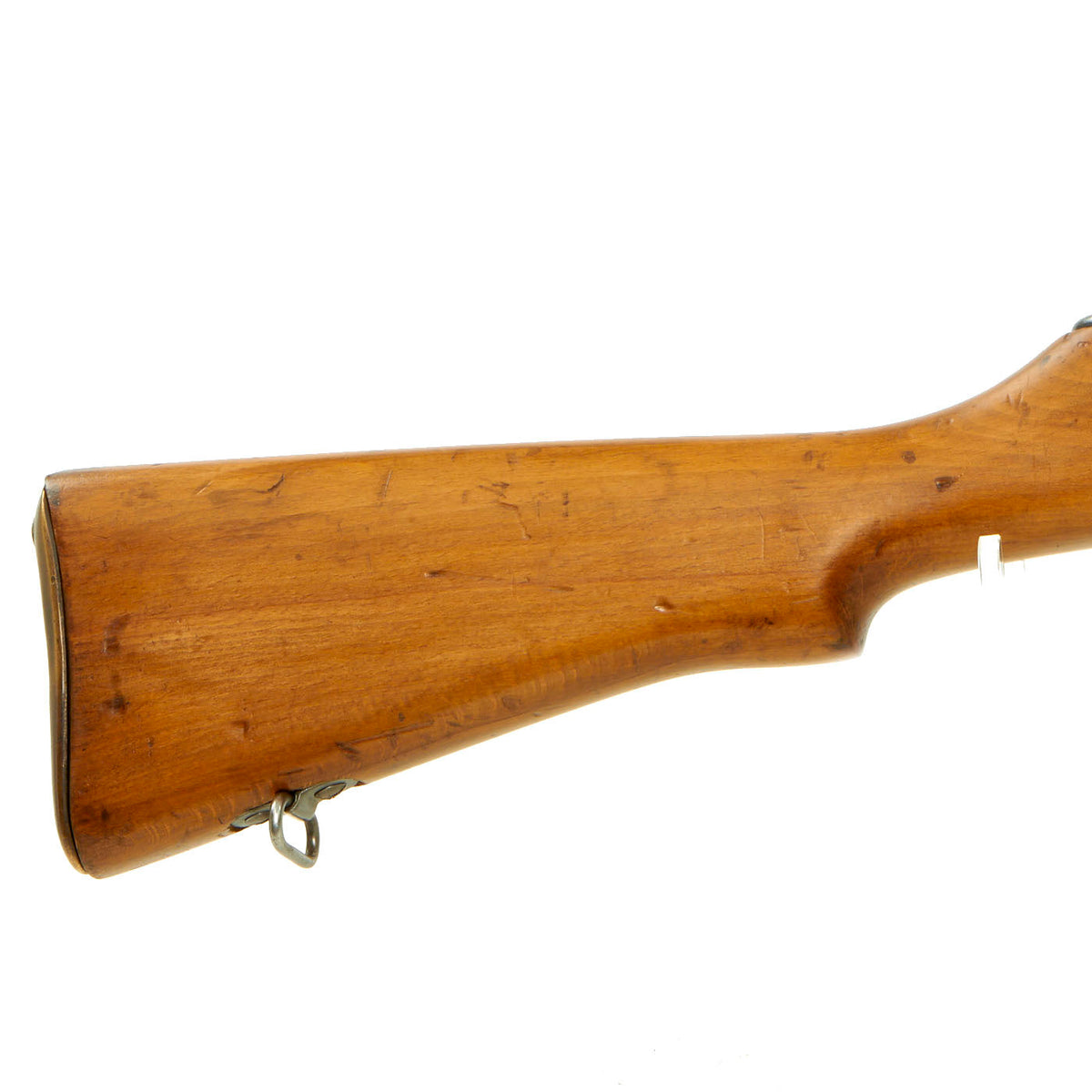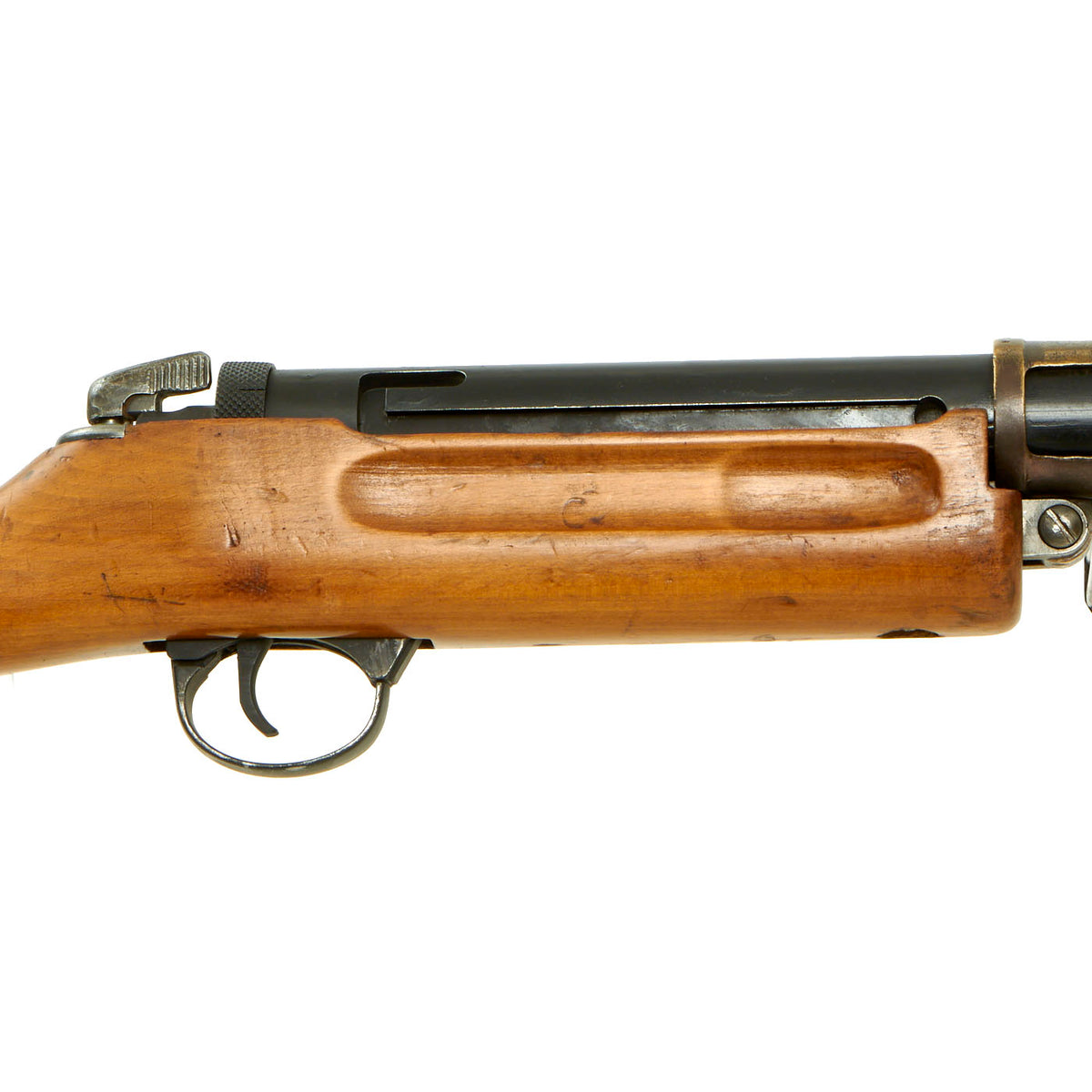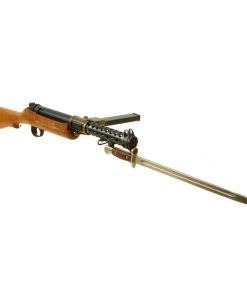Original British WWII Lanchester MK.I* Display Submachine Gun SMG with Magazine & Parade Bayonet Original Items
$ 995,00 $ 248,75
Original Item: Only One Available. One of the best quality British SMGs of WWII, the Lanchester has a full wood buttstock with brass butt plate. A heavy bronze magazine housing and ventilated barrel jacket complete with bayonet lug and support. This example comes with a very nice ’17 dated nickel plated parade P-1907 bayonet by SANDERSON.
This example is offered in very good condition and is built on an ATF compliant non-firing solid aluminum dummy receiver. It is nicely marked on the magazine housing:
LANCHESTER
MK. I*
BOSS
H77592
C F
This example comes complete with a 20 round magazine (deactivated where required). While these did have a 50 round magazine, they proved unwieldy, especially as they stuck out to the side of the gun. Condition is very good, though there is no rear sight or cocking handle fitted to this example, as they are no longer available. The stock is in excellent condition, with very little wear at all, and a lovely honey color. It is the MkI* version of the stock, with no cutout for the selector.
A very nice example, complete with magazine & bayonet. Ready to display!
The Lanchester is a submachine gun (SMG) manufactured by the Sterling Armaments Company between 1941 and 1945. It is a copy of the German MP28/II and was manufactured in two versions, Mk.1 and Mk.1*; the latter was a simplified version of the original Mk.1, with no fire selector and simplified sights. It was primarily used by the British Royal Navy during the Second World War, and to a lesser extent by the Royal Air Force Regiment (for airfield protection). It was given the general designation of Lanchester after George Herbert Lanchester, who was charged with producing the weapon at the Sterling Armaments Company.
Following the Dunkirk evacuation in 1940, the Royal Air Force decided it required a submachine gun for airfield defence. With no time available for the usual research and development of a new weapon, it was decided to create a direct copy of the German MP 28. The British Admiralty decided to join with the RAF in adopting the new weapon, and played a key role in its design. Ultimately, it was within the Royal Navy that most of the Lanchesters that were produced went into service.
The British copy of the MP28 was given the general designation of Lanchester after George Herbert Lanchester, who was charged with producing the weapon at the Sterling Armaments Company, the same company that later produced the Sterling submachine gun.
The Lanchester was envisioned as a weapon used for guarding prisoners and accompanying naval landing and assault parties. It was a very solid, well-made submachine gun of high-quality materials, in many ways the complete opposite of its direct contemporary, the Sten.
The Lanchester had a heavy wooden butt and stock, a machined-steel action and breech block, a magazine housing made from solid brass[3] (later steel) and a mounting on the muzzle for use of a long-bladed 1907 bayonet. The rifling differed from the German original in details to accommodate various lots of 9mm ammunition then being acquired for service use.
Produced in two versions, Mk.1 and Mk.1*. The Mk.1* was a simplified version of the original Mk.1, which omitted the fire mode selector (full automatic only) and used simplified sights.
Fast Shipping with Professional Packaging
Thanks to our longstanding association with UPS FedEx DHL, and other major international carriers, we are able to provide a range of shipping options. Our warehouse staff is expertly trained and will wrap your products according to our exact and precise specifications. Prior to shipping, your goods will be thoroughly examined and securely secured. We ship to thousands clients each day across multiple countries. This shows how we're dedicated to be the largest retailer on the internet. Warehouses and distribution centres can be located throughout Europe as well as the USA.
Note: Orders with more than one item will be assigned a processing date depending on the item.
Before shipping before shipping, we'll conduct a thorough inspection of the items you have ordered. Today, the majority of orders will be delivered within 48 hours. The delivery time will be between 3-7 days.
Returns
The stock is dynamic and we cannot completely manage it because multiple stakeholders are involved, including our factory and warehouse. So the actual stock may alter at any time. It's possible that you may not receive your order once the order has been made.
Our policy is valid for a period of 30 days. If you don't receive the product within 30 days, we are not able to issue a refund or an exchange.
You can only return an item if it is unused and in the same state as the day you received it. You must have the item in its original packaging.
Related products
Uncategorized
Uncategorized
Band of Brothers ORIGINAL GERMAN WWII Le. F.H. 18 10.5cm ARTILLERY PIECE Original Items
Uncategorized
Uncategorized
Uncategorized
Uncategorized
Angolan Rebel 1970s era 60mm Inert Display Mortar from Angolan Civil War Original Items
Uncategorized
Uncategorized
Australian WWII Owen MK1 Machine Carbine SMG Custom Fabricated Replica with Sling Original Items
Uncategorized
Uncategorized
Armored Burgonet Helmet & Polearm from Scottish Castle Leith Hall Circa 1700 Original Items
Uncategorized
Uncategorized
Uncategorized
Uncategorized
Uncategorized
Uncategorized
Uncategorized
Uncategorized
Uncategorized
